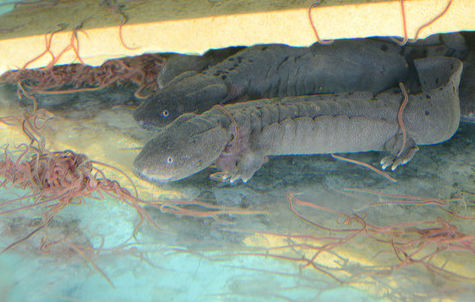
The hellbender, America’s largest salamander, has been disappearing from its historic range in the eastern US. However, there is hope for this unique creature as a federal judge has overturned a 2019 ruling by the US Fish and Wildlife Service, stating that the hellbender is not in need of protection under the Endangered Species Act, as reported by the AP. US District Judge Lewis J. Liman has ordered a reassessment of the hellbender’s endangered status. This ruling has been hailed as a “lifesaving victory” for hellbenders and their freshwater habitats by Elise Bennett at the Center for Biological Diversity. Hellbenders can be found in streams and rivers from New York to Alabama, but their numbers have greatly declined due to habitat loss and poor water quality.
According to the Center for Biological Diversity, the Fish and Wildlife Service ruled against protecting the hellbender in 2019, despite acknowledging that around 80% of the populations are in decline or have been lost. The hellbenders are highly sensitive to pollutants and the destruction of their habitats caused by sediment, making them an indicator for the overall health of Appalachian streams. Robin Broder, acting executive director of Waterkeepers Chesapeake, describes Judge Liman’s ruling as a “great victory” not only for hellbenders but also for all species that rely on clean, free-flowing streams and rivers.
The hellbender, a fully aquatic species, can reach lengths of over two feet and has a lifespan estimated at 25 to 30 years, possibly even longer. It has various regional nicknames such as “devil dog,” “snot otter,” “Allegheny river monster,” “grampus,” and “old lasagna sides,” according to the Center for Biological Diversity. In a positive development, a very young hellbender was recently discovered in the Blue River during a routine survey in southern Indiana, as reported by WEHT. This juvenile hellbender, estimated to be eight months old, is the first of its kind reported in the river in 40 years.
A reintroduction program, which involves releasing hellbenders from healthy populations when they are old enough to avoid predators, has been implemented in the area. Biologists are delighted by the evidence of hellbenders reproducing in the wild. Rod Williams, director of the Help the Hellbender lab at Purdue University, describes this finding as a significant milestone for their conservation program. While there is still much work to be done, this evidence suggests that their approach is effective. (Read more salamander stories.)
Denial of responsibility! Vigour Times is an automatic aggregator of Global media. In each content, the hyperlink to the primary source is specified. All trademarks belong to their rightful owners, and all materials to their authors. For any complaint, please reach us at – [email protected]. We will take necessary action within 24 hours.


